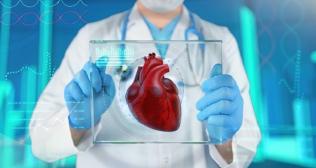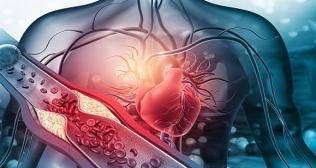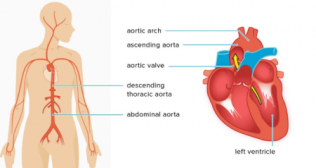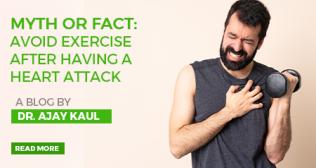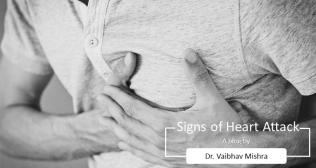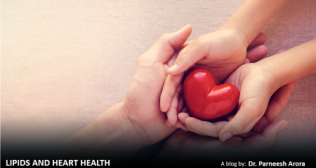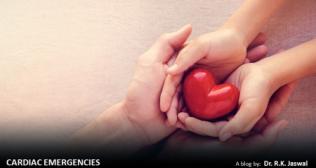
Cardiac Emergencies: Signs, First Aid, and Timely Treatment
As per the World Health Organization (WHO), approximately 500,000 to 600,000 individuals in India die due to sudden cardiac death (SCD) annually, and are below the age of 50. In a world where heart health is a significant issue, understanding the symptoms of cardiac arrest is equally important. Cardiac/ Heart related emergencies are life-threatening conditions that demand immediate medical attention. They can occur due to various causes, such as heart attack, cardiac arrest, arrhythmia, or heart failure. And identifying the symptoms is the first step towards timely intervention. In this blog, we will discuss the common signs, first aid, and timely treatment of cardiac emergencies.
What are the symptoms of cardiac arrest?
Cardiac arrest is a sudden loss of heart function, breathing, and consciousness. It is caused by an electrical malfunction in the heart that stops the blood flow to the brain and other vital organs. Cardiac arrest is a medical emergency that can lead to death within minutes if not treated promptly.
Some of the symptoms of cardiac arrest are:
- Loss of consciousness
- No pulse or breathing
- Chest pain or discomfort
- Shortness of breath
- Nausea or vomiting
- Dizziness or fainting
- Palpitations or irregular heartbeat
What are cardiac arrest treatments?
The first and most important step in treating cardiac arrest is to call for emergency medical services (EMS) or an ambulance. While waiting for help to arrive, you can perform cardiopulmonary resuscitation (CPR) on the person who has collapsed. CPR is a technique that involves chest compressions and rescue breaths to keep the blood and oxygen flowing in the body. CPR can increase the chances of survival and reduce the risk of brain damage.
If you are trained and have access to an automated external defibrillator (AED), you can also use it to deliver a shock to the heart and restore its normal rhythm. An AED is a device that can detect the heart’s electrical activity and guide you through the steps of using it. AEDs are often available in public places, such as airports, malls, schools, and offices.
What are the signs of a heart attack?
A heart attack is a condition where the blood flow to a part of the heart muscle is blocked, usually by a clot in a coronary artery. This can damage or destroy the heart tissue and lead to serious complications, such as heart failure or cardiac arrest. A heart attack is also a medical emergency that requires immediate treatment.
Some of the common indicators of a heart attack are:
- Chest pain or pressure that lasts for more than a few minutes or comes and goes
- Pain or discomfort experienced in the arms, back, neck, jaw, or abdomen
- Difficulty in breathing, with or without chest pain
- Sweating, nausea, or vomiting
- Light-headedness or fainting
- Anxiety or a sense of doom
What are the cardiac emergencies treatments for a heart attack?
The first and most important step in treating a heart attack is to call for EMS or an ambulance. While waiting for help to arrive, you can do the following:
- Try to keep calm and rest in a comfortable position
- Loosen any tight clothing and remove any jewellery or accessory
- If you have nitro-glycerine prescribed by your doctor, take it as directed
- Do not take any other medication unless advised by your doctor
The treatment for a heart attack may vary depending on the severity and type of the blockage. Some of the common treatments are:
- Angioplasty: A procedure that involves inserting a thin tube with a balloon at the end into the blocked artery and inflating it to widen the artery and restore blood flow
- Stent: A small metal mesh tube that is placed inside the artery after angioplasty to keep it open and prevent it from narrowing again
- Bypass surgery: A surgery that involves creating a new route for the blood to flow around the blocked artery using a graft from another part of the body
- Medications: Drugs that can help dissolve the clot, reduce the pain, lower the blood pressure, and prevent further damage to the heart
How to prevent cardiac emergencies?
Cardiac emergencies can be prevented by adopting a healthy lifestyle and managing the risk factors, such as:
- High blood pressure
- High cholesterol
- Diabetes
- Smoking
- Obesity
- Physical inactivity
- Stress
- Family history of heart disease
Some of the ways to prevent cardiac emergencies are:
- Eat a balanced diet that is low in salt, fat, and sugar and high in fruits, vegetables, whole grains, and lean proteins
- Exercise regularly for at least 30 minutes a day, five days a week
- Stop smoking and avoid being around other people who smoke (also known as second-hand smoke)
- Keep a healthy weight and maintain a good body mass index (BMI)
- Control your blood pressure, cholesterol, and blood sugar levels
- Manage your stress and practice relaxation techniques, such as meditation, yoga, or deep breathing
- Follow your doctor’s advice and take your medications as prescribed
- Have regular check-ups and screenings for heart disease
Why is timely treatment important for cardiac arrest?
Cardiac arrest is a medical emergency that requires immediate treatment at a hospital. The longer the person’s heart stops beating, the more damage is done to their vital organs and the lower their chances of recovery. At the hospital, the person will receive advanced care and monitoring. They may undergo tests to determine the cause and extent of their cardiac arrest. They may also receive medications, surgery, or implantable devices to treat their condition and prevent future episodes. The person may also need rehabilitation and follow-up care to improve their quality of life.
Conclusion
Cardiac emergencies are serious and potentially fatal situations that require prompt action and intervention. By knowing the signs and symptoms of cardiac arrest, performing first aid, and seeking timely treatment, you can save a life and make a difference. If you have any questions or concerns about your heart health, please contact Fortis Hospital and book an appointment with our expert cardiologists.







